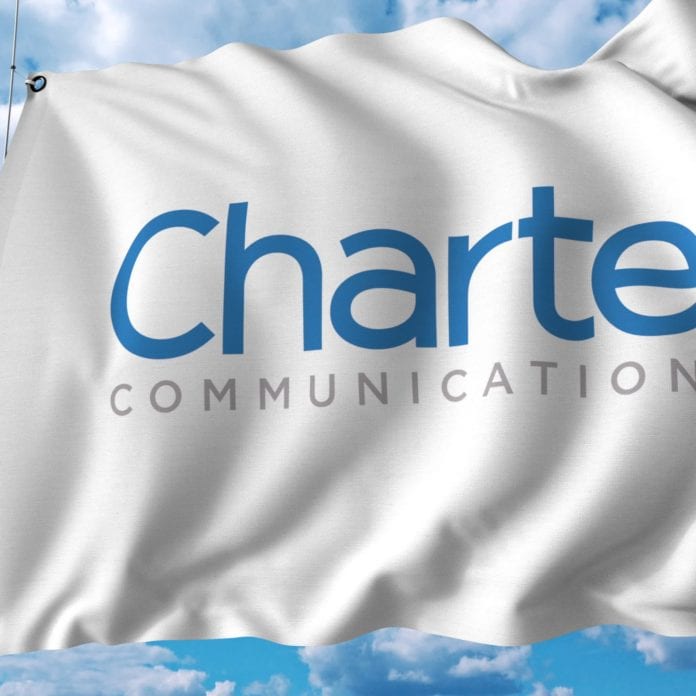‘We’re growing mobile nicely and we’re not giving away free handsets to do it’
Charter Communications spent $465 million on 210 licenses in the CBRS Priority Access License auction, and company executives said that they will use them in a “targeted 5G small cell strategy” that will also leverage unlicensed CBRS spectrum and Charter’s own wired network. Charter will dip its toes into small cell deployment this year, while scaling the back-office systems that it will need to support such deployments.
Charter’s Chairman and CEO Thomas Rutledge told investors on the cable company’s quarterly call that the company’s efforts in 2021 will focus on building “targeted” 5G small cells this year, and scaling the systems needed to actively manage handsets that will have multiple ways to connect wirelessly: Wi-Fi, CBRS or through Charter’s MVNO agreement with Verizon, which currently offers Charter customers access to Verizon’s nationwide 5G service.
“We intend to use those [PAL] licenses along with significant unlicensed CBRS spectrum on a targeted 5G small cell site strategy with our [hybrid fiber/coax] network providing power and backhaul,” Rutledge said. “Those small cells, combined with improving Wi-Fi capabilities, enable better throughput while driving significantly better economics for Charter.”
He said that Charter would, during 2021, build some “targeted 5G small cell sites, which will help us learn how to pace our purely return-on-investment-based CBRS deployment.”
The company ended 2020 with a base of 2.4 million mobile lines, having added 1.3 million of those during 2020. Charter added 315,000 new mobile lines in the fourth quarter of 2020, up from 288,000 during the fourth quarter of 2019.
“We’re growing mobile nicely and we’re not giving away free handsets to do it,” CFO Chris Winfrey said on the call, adding that “We believe we were the fastest growing mobile operator in our footprint during the fourth quarter and for the full year.”
Charter says that it put more than $500 million into its mobile business in capital expenditures during 2020, out of a total capex spend of $7.4 billion for the year. It expects to see similar mobile capex numbers for 2021, because it needs to build out more mobile stores than it had originally anticipated and put some money into scaling the mobile back-office systems needed for its CBRS deployment. It doesn’t expect that level of mobile capex to drop off until 2022.
The company’s baseline assumption for the economy in 2021 is that the COVID-19 vaccine will be widely dispensed and that the economy will return to normal activity by the middle of this year, although that is still a bit uncertain.
Asked about CBRS deployment plans for this year, Winfrey responded, “It’s just going to be pretty small … in terms of what we’re looking to achieve this year.”
The company will look to scale an “ROI-based deployment” of a Radio Access Network in a 2022 timeframe, seeking a quick payback through lower operating costs, but Winfrey said that ” it will still be fairly de minimis in terms of its overall impact … and the pace of that rollout will really be dictated based on how quickly we can go and how quickly we can realize those type of returns.”
Rutledge added that such deployments would be “specific to the demand utilization in the location where the radios are placed.”
“It’s an opportunistic strategy, wherever our cost would be lower by investing in more CBRS radio deployment, our cost will go down in such a way that we’ll get a return on investment,” he said.
In terms of how much network traffic CBRS might be able to offload, Rutledge said that over a timeframe of four to five years, it could be up to a third of traffic. However, the bulk of the wireless devices that operate on Charter’s network (around 400 million devices, Rutledge said) connect via Wi-Fi — which complicates offloading because Charter has multiple options to do so. “CBRS is just a tool, along with Wi-Fi, for us to improve that connectivity experience,” Rutledge said. “We’ve looked at CBRS strictly as an incremental opportunity from a return on investment point of view to move traffic onto our network, but it also does have the potential of increasing the consumers’ experience in terms of their satisfaction, because of the quality of that connection. And so that’s sort of an unstated opportunity going forward — hard to quantify, but part of our strategy.”
Winfrey reiterated that Charter isn’t interested in wireless as a standalone business, but as a way to increase the overall connectivity of its service with a mobile connection that drives its overall penetration.

